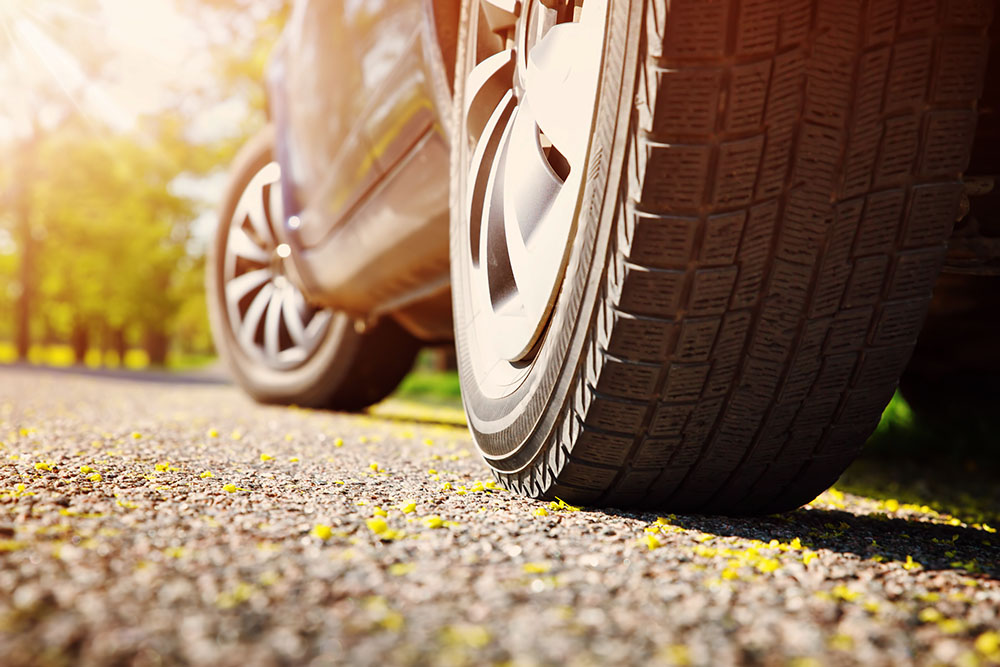Now Showing: A Tire For All Seasons

Your vehicle has been beaten by winter weather and the tires look a little worn. They fail the tread “penny test.”
How can you choose the right tires for spring and summer driving? The ubiquitous “all-season” category offers a bewildering array of choices.
Hint: All-season tires can get you right through fall and into winter.
“There are so many products,” said Will Robbins, senior product manager at Bridgestone America. “The way you drive and where you drive are important parts of choosing an all-season tire.”
For instance, an SUV used for hauling may require a different type of tire than one used for a daily commute to the office. Yet, both types of tires may be considered “all-season.”
The Cirque Du Soleil act of tire design involves balancing three major components: wet weather, cold climates and tire wear. Emphasizing one component affects the other two.
“All-season tires are tuned for a variety of climate conditions,” said Robbins, referring to their adaptability throughout the year.
Think wet weather or summer roads but not freezing temperatures. For commuting Robbins suggests longevity and comfortable ride. Also, most commuters need tires that can handle the entire range of temperate climates--summer as well as winter.
“What types of conditions are you driving?” Robbins asked. “What type of performance do you prefer as a driver?”
As an example, truck tires are designed to handle heavy loads. Or they may require aggressive tread intended for the kind of gravelly dirt roads found in campsites and forests.
What about extreme climates and frequent snow? For Robbins, nothing beats a winter tire for grip and cold weather performance.
Robbin’s background in tire manufacturing bubbles to the surface when asked about the latest technology. He seamlessly injects phrases such as “sipes” and “rubber compounds” as naturally as a chef discusses flour and sugar.
The fight for grip is won by a thousand thin cuts. Those slashes, or “sipes,” hold the keys to traction--they flex and provide more edges on road surfaces.
“The latest rubber compounds have allowed manufacturers to balance winter and summer requirements,” Robbins said.
Product choices evolved during the past 10 years with the advent of “3D sipe technology.” Engineers simulated various road conditions, tested sipe patterns and added an interlocking ridge within the tread blocks to increase stiffness.
Angle, proximity and number of sipes matter. In snow a zigzag pattern lets snow accumulate in the tread itself, which creates more friction with ice on the road. At high-speed tread pattern designs reduce the risk of hydroplaning by ruffling the thin, flat watery surface. On warm days sipes flex and bend to improve grip on curvy roads.
“All-season tires are designed to stay flexible in spring weather,” Robbins said. “They absorb road bumps and don’t generate much noise.”
According to Robbins, all-season tires benefit drivers by offering good balance between grip and wear across a variety of road conditions. He offered the following suggestions for choosing your next set of all-season tires:
- Decide what you want from your next set of vehicle tires: long wear, performance in wet weather or ability to handle extreme cold. All tires are a trade-off of those three requirements.
- Select all-season tires when you are looking for performance and longevity in mild climates. All-season tires are designed to provide comfort for family sedans, stability in rainy climates and extended wear for freeway commuters.
- Is your vehicle hauling a trailer or carrying a lot of cargo weight? Ask your tire advisor about tire “load rating.”
- Do you frequent extreme cold climates? Some all-season tires are designed for weekend mountain excursions as well as the weekday commute.
- Check inflation monthly to prevent uneven wear and extend the tread life of your vehicle’s tires.
- Don’t ignore the Tire Pressure Monitoring System light. It means your tires need immediate attention.
- Ask about the tire “wear” warranty. Tires with quality rubber compounds and long life provide better value over product lifetime.